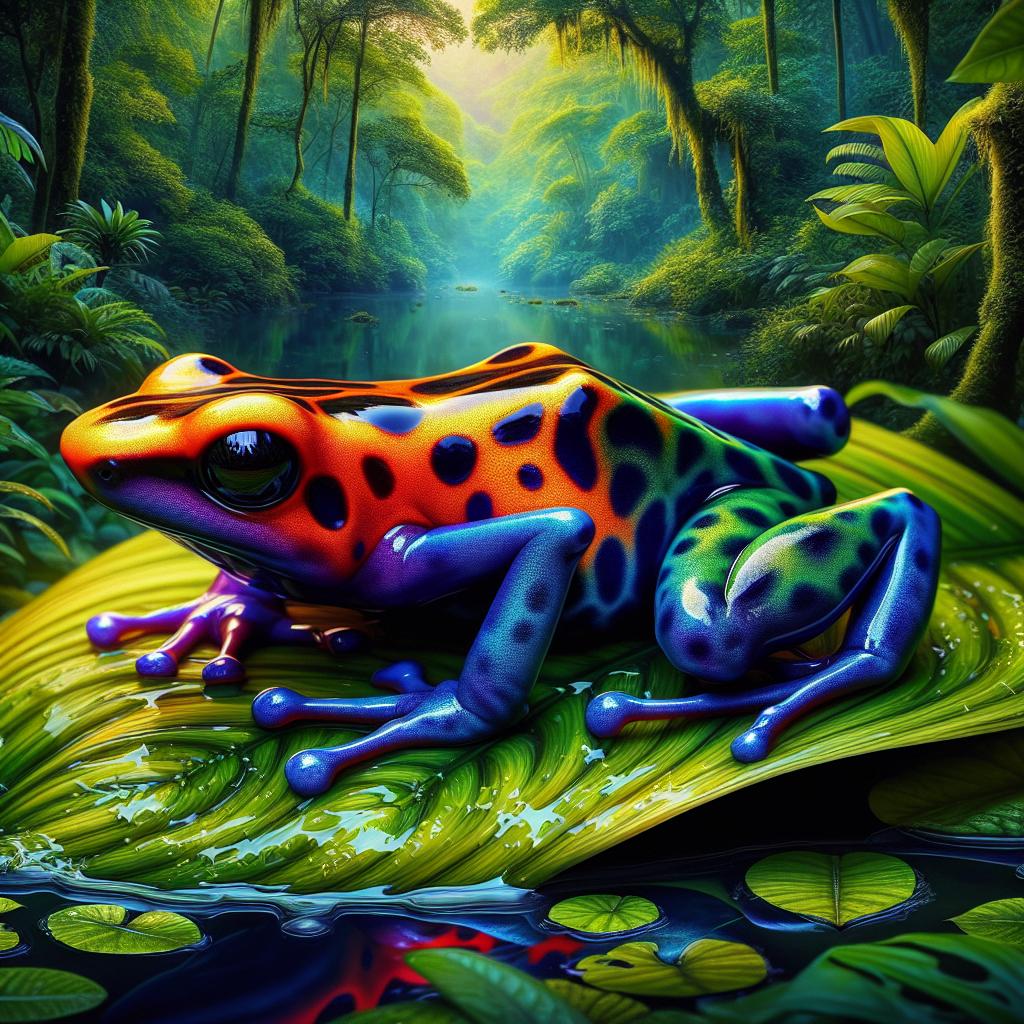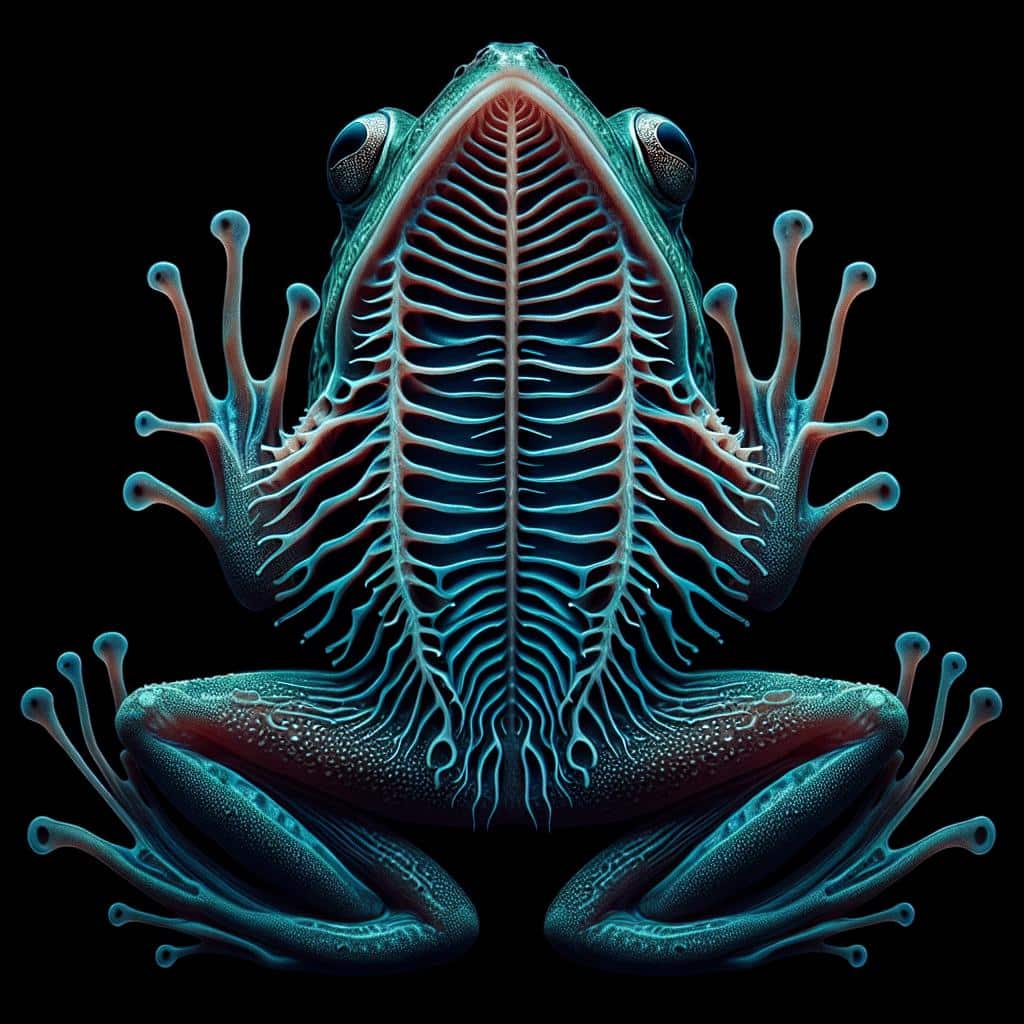Imagine you’re trekking through a dense tropical rainforest, the air is thick with mystery, and every leaf could be harboring a secret. Among those secrets are frogs, but not just any frogs–the kind that carry a concealed weapon: poison. In the natural world’s high-stakes game of survival, these amphibians have developed a potent form of defense that deters predators and fascinates humans alike. “What Frogs Poisonous” delves into the intriguing realm of toxic frogs, exploring which species have turned their skin into chemical warfare and why this deadly adaptation has proven vital for their survival. So, lace up your hiking boots and prepare to uncover the amphibious artisans of the toxin trade and their lethal legacy in the animal kingdom.

Overview of Frog Toxicity
Definition of Poisonous Frogs
When you hear about poisonous frogs, what comes to mind? Likely, vibrant little creatures that carry a deadly secret in their skin. But what exactly makes a frog poisonous? Simply put, poisonous frogs are those that produce toxins potent enough to cause harm or deter potential predators. These toxins can lead to serious health issues or even death if ingested or, in some cases, merely touched.
General Characteristics of Poisonous Frogs
You might wonder, how can you spot a poisonous frog? Well, many of these frogs boast bright colors and patterns, a biological dress code that screams, “Stay away!” This type of warning coloration, known as aposematism, alerts predators to the danger without the need for a physical confrontation. Along with their colorful exteriors, poisonous frogs often possess less athletic builds as they rely more on their toxicity for protection than on escape.
Adaptation and Evolution of Toxins in Frogs
Have you ever wondered why these little amphibians carry such lethal cocktails within their skin? The story of their toxicity is a tale of evolution and adaptation. Over time, some frog species have developed the ability to secrete toxins as a survival mechanism. These poisons deter predators and even microbial threats. By incorporating alkaloids from their diet—like those from certain ants and mites—into their own chemical defenses, these frogs have become moving, leaping no-go zones in their ecosystems.
Most Notable Poisonous Frogs
Poison Dart Frogs (Dendrobatidae)
You’ve probably heard of poison dart frogs; they’re like the celebrities of the toxic frog world! Hailing from the family Dendrobatidae, these frogs are mostly found in Central and South America. They get their name from indigenous people’s practice of tipping their darts and arrows with these frogs’ toxins for hunting. Sporting an array of bright colors, they’re as deadly as they are beautiful, with some species having enough poison to take down several adult humans.
Mantella Frogs (Mantella)
Leap across the ocean to Madagascar, and you’ll meet the mantella frogs. They may remind you of the poison dart frogs because of their similar vivid hues and toxic skin, but they’re a different group altogether. The Mantella genus contains smaller frogs but don’t let their size fool you; they pack a punch with their skin’s poisonous alkaloids.
Skin Alkaloids and their Effects
When talking about the toxic makeup of these frogs, your focus should be on the skin alkaloids. These chemical compounds wreak havoc on the nervous systems of would-be predators. Depending on the alkaloids present, the effects on potential predators or curious humans could range from mild irritation and numbness to paralysis or even death.

Geographical Distribution of Poisonous Frogs
Poisonous Frogs in the Amazon
The Amazon rainforest is a hotspot for biodiversity, with a dizzying array of life forms, including some of the most infamous poisonous frogs. The warm, humid conditions and abundance of insects make for a perfect breeding ground for toxic species like the poison dart frogs.
Distribution in Madagascar
Madagascar, an ancient island with unique flora and fauna, is the sole domain of the mantella frogs. Here, they have evolved separately from their toxic cousins in South America, developing their own brand of chemical defenses that serve the same purpose—to stay off the menu.
Global Hotspots for Toxic Frogs
While the Amazon and Madagascar are famous for their deadly amphibians, other parts of the world such as Southeast Asia, and even parts of the United States, host their own local varieties of toxic frogs. Regions with rich biodiversity often surprise us with these little evolutionary marvels.
Chemical Composition of Frog Poisons
Batrachotoxins
If you’ve ever wondered about the most potent toxins in the frog world, that title belongs to batrachotoxins. These are steroidal alkaloids known to cause full-blown havoc on the functioning of nerve cells, leading to paralysis and, if untreated, can result in death due to cardiac or respiratory failure.
Pumiliotoxins
A notch down from batrachotoxins, but still incredibly hazardous, are pumiliotoxins. They have a less severe effect on the heart and nervous system but can still cause significant harm to larger animals, including humans, if enough is absorbed.
Epibatidine and its Analogs
Then there’s epibatidine, an alkaloid isolated from the skin of certain poison dart frogs. Interestingly, while incredibly toxic, its structure is similar to that of nicotine and has been researched for its potential as a powerful painkiller, showing that even the most hazardous substances can have a silver lining.

Mechanisms of Toxin Delivery
Cutaneous Secretion of Poisons
Picture a frog, calmly sitting on a leaf. It doesn’t have to do much to defend itself because its skin does all the work. Poisons are secreted directly onto their skin, creating a lethal barrier to any potential predator thinking of a froggy snack.
Defensive Behaviors
Some frogs have developed interesting behaviors to bolster their chemical defenses. When threatened, they might engage in actions like ‘mapping’—presenting and wiping their toxic skin on an aggressor—or inflating their bodies to make themselves a bigger, more daunting mouthful.
Absorption and Ingestion Risks to Predators
For any animal that ignores the warning signs and decides to take a bite, the outcome is rarely pleasant. The toxins can be absorbed through mucous membranes or ingested, leading to a nasty surprise and, in many cases, an important lesson—if they survive.
Human Interactions and Uses
Indigenous Use of Frog Poisons
Indigenous tribes have long understood the utility of frog poisons. In the Amazon, they’ve traditionally harvested the toxins of poison dart frogs for use in hunting, applying the secretions to the tips of arrows or darts for a swift and sure kill.
Modern Research on Frog Toxins
In modern times, your interest might be piqued by the research into these natural compounds. These frogs are not just a source of danger but of potential medical miracles. Scientists are keen on studying their toxins for insights into new medications and treatments, from pain management to possible cures for diseases.
Medical Potential of Frog Poisons
While handling these frogs is dangerous, the chemical compounds in their toxins are invaluable to medical research. Your chronic pain or even some neurodegenerative diseases could one day be managed with medicines derived from these lethal chemicals. Sounds like a paradox, right? Yet, nature often works in mysterious ways.
Ecological Role of Poisonous Frogs
Natural Predator Deterrence
Think of these frogs as the armed guards of their territory. Their very presence deters predators, thanks to the potent toxins they carry. This natural form of pest control helps maintain the delicate balance within their ecosystems.
Role in Ecosystems
Not just a deterrent to predators, poisonous frogs play several roles in their ecological niches. From controlling insect populations to being a food source for toxin-tolerant species, they’re integral threads in the complex web of life.
Influence on Biodiversity
The existence of toxic frogs within an ecosystem can influence the biodiversity around them. Potential predators must adapt or avoid them, and this selection pressure can lead to a rich array of species with unique evolutionary traits—all thanks to the frogs’ chemical arsenals.
Conservation Status of Poisonous Frogs
Threats to Poisonous Frog Populations
You may be thinking, “If they’re so toxic, who or what could harm them?” Sadly, poisonous frogs face threats that their toxins can’t repel—habitat destruction, pollution, climate change, and the pet trade all play a role in diminishing their numbers.
Conservation Efforts and Initiatives
To safeguard these colorful critters, conservationists around the world are taking action. From breeding programs to protected areas and legal regulations, the fight is on to ensure that future generations can marvel at these toxic treasures.
Impact of Habitat Loss and Climate Change
Habitat loss and climate change can have devastating impacts on these fragile species. As forests shrink and weather patterns shift, the suitable environments that these frogs depend on are disappearing, leading to a decline in their populations and a real risk of extinction for some species.
Safety and Precautions
When Handling Poisonous Frogs
Should you ever find yourself in a situation where handling a poisonous frog is necessary, it’s crucial to take precautions. Wearing gloves and ensuring that your skin doesn’t come into contact with the frog’s poison are imperative safety measures.
First Aid for Frog Toxin Exposure
Accidents happen, and knowing basic first aid for toxin exposure could be life-saving. Washing the affected area with copious amounts of water and seeking immediate medical attention are the first steps you need to take if you suspect you’ve been poisoned.
Education and Awareness
Perhaps most crucial of all is education and awareness. Understanding the risks associated with these amphibians and their ecological importance helps foster respect and appropriate behavior around them.
Future Research and Potential Discoveries
Unexplored Species and Unknown Toxins
There are undoubtedly many secrets still hiding in the rainforests and remote regions of our planet. With undiscovered species of frogs out there, there’s a world of unknown toxins waiting to be studied. Who knows what we might uncover?
Potential for New Medical Compounds
As researchers delve deeper into the chemical makeup of frog poisons, there’s always the potential for groundbreaking medical compounds. These natural poisons could be the key to unlocking new treatments and relief for a plethora of human ailments.
Ecological Implications of New Discoveries
Every new discovery in the realm of poisonous frogs brings with it ecological implications. Understanding how these amphibians interact with their environment and affect the biodiversity around them can help us better appreciate and protect our planet’s rich tapestry of life.



